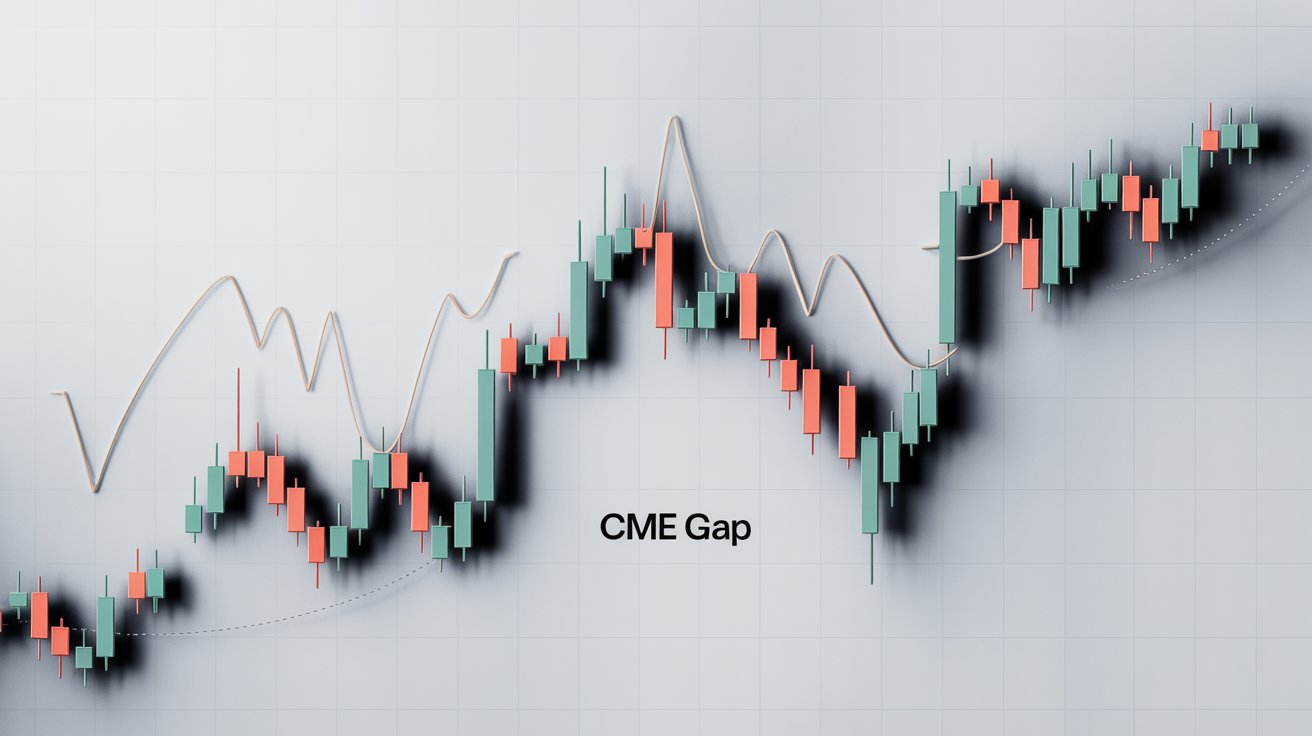What is Dymension (DYM)? A Modular Blockchain for RollApps
24 March 2025

Looking to understand Bitcoin’s mysterious price gaps and get ahead of the curve? In this deep dive, you'll learn exactly what a Bitcoin CME gap is, why traders care about the opening price and the closing price of Bitcoin, and how you can use these gaps to make educated decisions. We'll also walk you through real chart examples, add expert analysis, and drop videos to help beginners and pros decode this powerful phenomenon. Stick around and this guide will turn your chart curiosity into clarity.
A CME gap refers to the blank space on a CME Bitcoin futures chart where there’s a difference between the Friday close and Monday open. Since the CME trades only from Sunday evening to Friday evening, any weekend price moves remain un-reflected until the market reopens, creating what looks like a gap
These gaps appear either upward (price jumps) or downward (price falls). And yes, they are distinct from gaps on perpetual spot exchanges because those trade 24/7.
CME (Chicago Mercantile Exchange) gaps are a unique feature in Bitcoin futures trading, and they occur due to the way traditional financial markets operate compared to the 24/7 crypto market. Here's a breakdown of how and why these gaps happen:
Unlike crypto exchanges that run 24/7, the CME operates on a limited schedule:
During this weekend break, Bitcoin continues to trade on crypto exchanges like Binance, Coinbase, and Kraken.
If Bitcoin experiences significant price movement over the weekend, the CME chart will skip over these price levels, forming a gap when it resumes on Sunday.
1. Friday, Dec 25, 2020 (CME Close): Bitcoin futures closed at $23,715 on the CME.
2. Sunday, Dec 27, 2020 (CME Open): Bitcoin reopened at $26,520, skipping over $2,805 in price action.
3. CME Gap Size: $26,520 - $23,715 = $2,805 (Bullish Gap Up)
During the weekend when CME was closed:
CME gaps fall into three types (mirroring traditional market gap taxonomy):
1. Breakaway Gaps: Occur at the beginning of major moves—strong momentum may mean the gap stays open.
2. Runaway (continuation) Gaps: Appear mid-trend, signaling ongoing strong sentiment. Traders anticipate continuation
3. Exhaustion Gaps: Show up near the end of a move and often get filled quickly.
Identify the gap boundaries, wait for price to move toward that zone, and trade enters/exits around it
Gaps create visual levels on charts—traders use them to set stops or triggers, often with RSI or Fibonacci tools
CME Bitcoin futures are standardized contracts that let you speculate on the future price of Bitcoin without holding the actual asset.
To trade CME Bitcoin futures, you need a brokerage that offers access to the CME derivatives market. Some popular options:
Make sure the broker:
Trading Bitcoin CME futures isn’t for total beginners. You need:
| Requirement | Description |
|---|---|
| Margin Deposit | Futures are traded on margin — brokers will require initial & maintenance margin (e.g., $15,000+ for standard BTC contracts). |
| Risk Tolerance | Futures trading involves high volatility and leverage. |
| Trading Experience | Futures are best suited for experienced or well-informed traders. |
Steps:
Log into your broker’s trading platform
Search for standard futures and MBT for micro contracts
Choose a contract month
Set the Position type: Buy (long) or Sell (short), Order type: Market or Limit Stop-loss or take-profit levels (optional)
CME Bitcoin futures expire monthly on the last Friday of the month at 4:00 PM London time.
Since CME caters largely to institutional traders, gap fills might reflect larger market positioning. Institutional strategies could include hedging gaps and using options/futures spreads around gap zones.
1. Nov 2024 “runaway gap at ~$77K–81K, filled by March 2025’s dip to $76.7K
2. Deep March 2023 gap between $20K–21.1K, filled within a month
3. Regular weekend gaps: routine and yet still effective as targets even if smaller
Video Resources to learn about resistance levels and risk management when trading CME gaps:
Bitcoin CME Gaps: What They Are, and How to Trade Them (Trading Education)
Bitcoin CME Gap Explained from a Bitcoin Perspective
New CME Gaps for BTC, ETH, and SOL
These videos underscore the impact of CME gaps and how to use them in live analysis.
From uncovering weekends on the CME chart to mastering gap-filling strategies, this guide breaks down the Bitcoin CME gap into simple and actionable insights. You’ve learned:
Armed with this knowledge, you’re not just spotting blank spaces—you’re understanding price psychology and enhancing your crypto toolkit.
You can also read on Bitcoin Golden Cross to learn how to prepare for bull runs before they come.
The Bitcoin CME gap refers to a price difference that appears on the CME Bitcoin futures chart when the market closes on Friday and reopens on Sunday, often due to weekend price movement in the 24/7 crypto market.
Not always, but historically, many CME gaps have been filled eventually. This creates a trading theory that prices are likely to revisit those levels, although it's not guaranteed.
To find a CME gap, load the CME: BTC1! chart on TradingView and look for discontinuities between the Friday closing and Sunday opening prices—typically on the 1D or 4H timeframes.
CME gaps often act as psychological magnets for traders. Many use them to predict possible future price movements, plan entries/exits, and identify potential support/resistance levels.
Yes. Even though CME futures don’t operate 24/7, price action in the spot market often aligns with CME gaps. Traders on platforms like Binance or Coinbase still use these gaps as part of their analysis.